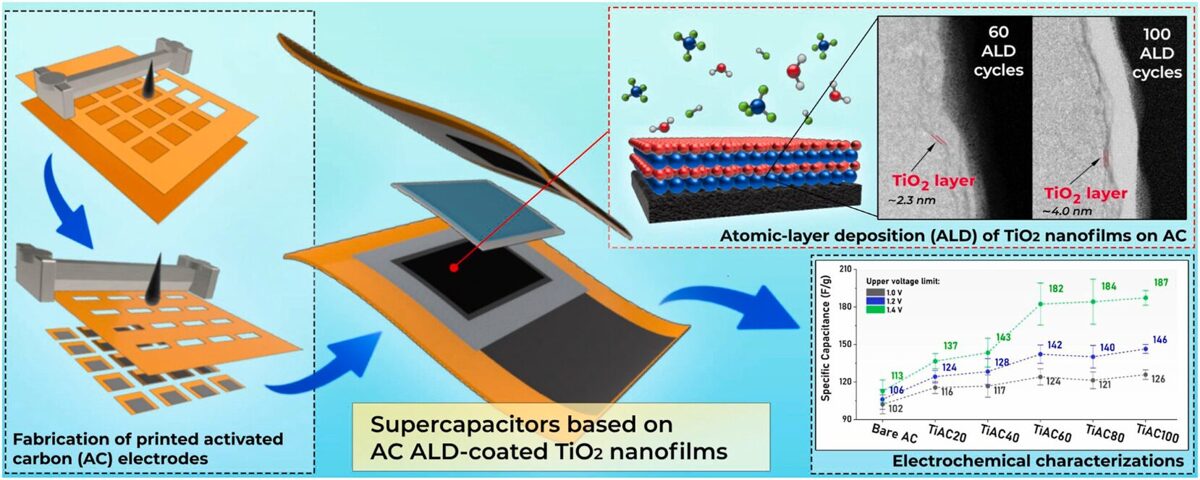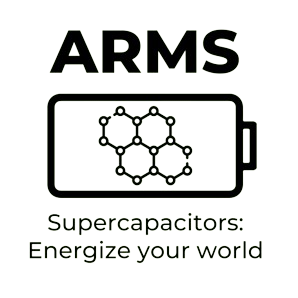ARMS publication featured in Journal of Power Sources
 Graphical abstract of the publication
Graphical abstract of the publication
The ARMS project is proud to announce the publication of a scientific article in the Journal of Power Sources (662 (2026); 238691). The article, titled "Interfacial engineering of conformal titanium oxide nanofilms on porous carbon supercapacitor electrodes via atomic layer deposition", presents an advancement in the development of high-performance, sustainable energy storage devices.
The research was conducted by a multidisciplinary team:
- Remuel Isaac M. Vitto, Hamed Pourkheirollah, Jari Keskinen, Amit Tewari, Donald Lupo, Paul R. Berger, and Matti Mäntysalo from Tampere University, Finland
- Steffen Vindt from InnoCell ApS, Denmark
- Andrew Cook from Beneq Oy, Finland
- Līga Grīnberga, Līga Ignatāne, and Gints Kučinskis from the Institute of Solid State Physics, University of Latvia
- Aleksandrs Volperts from the Latvian State Institute of Wood Chemistry
The study presents a novel approach to enhancing the electrochemical performance of supercapacitors by coating porous activated carbon (AC) electrodes with ultra-thin titanium dioxide (TiO₂) nanofilms using atomic layer deposition (ALD). The authors developed a low-temperature ALD process (120 °C) using TiCl₄ and H₂O precursors, optimized for high surface area substrates like AC.
The motivation stems from the need to improve the energy density of supercapacitors, which traditionally lag behind lithium-ion batteries. By integrating pseudocapacitive materials such as TiO₂ with AC, the researchers aimed to combine electric double-layer capacitance (EDLC) with faradaic redox reactions for enhanced performance.
Key findings include:
- The TiO₂ nanofilms were amorphous, highly uniform, and conformal, as confirmed by SEM, TEM, and XPS analyses.
- Optimal performance was achieved at 60 ALD cycles (~2.3 nm film thickness), resulting in a 61% increase in specific capacitance compared to bare AC.
- The dominant energy storage mechanism was surface redox reactions, with some contribution from intercalation-type pseudocapacitance.
- Excessive film thickness led to pore blocking and reduced performance, highlighting the importance of precise thickness control.
The study concludes that this ALD-based interfacial engineering strategy offers a scalable and sustainable route to next-generation high-performance supercapacitors, particularly suitable for flexible and printed electronics.
